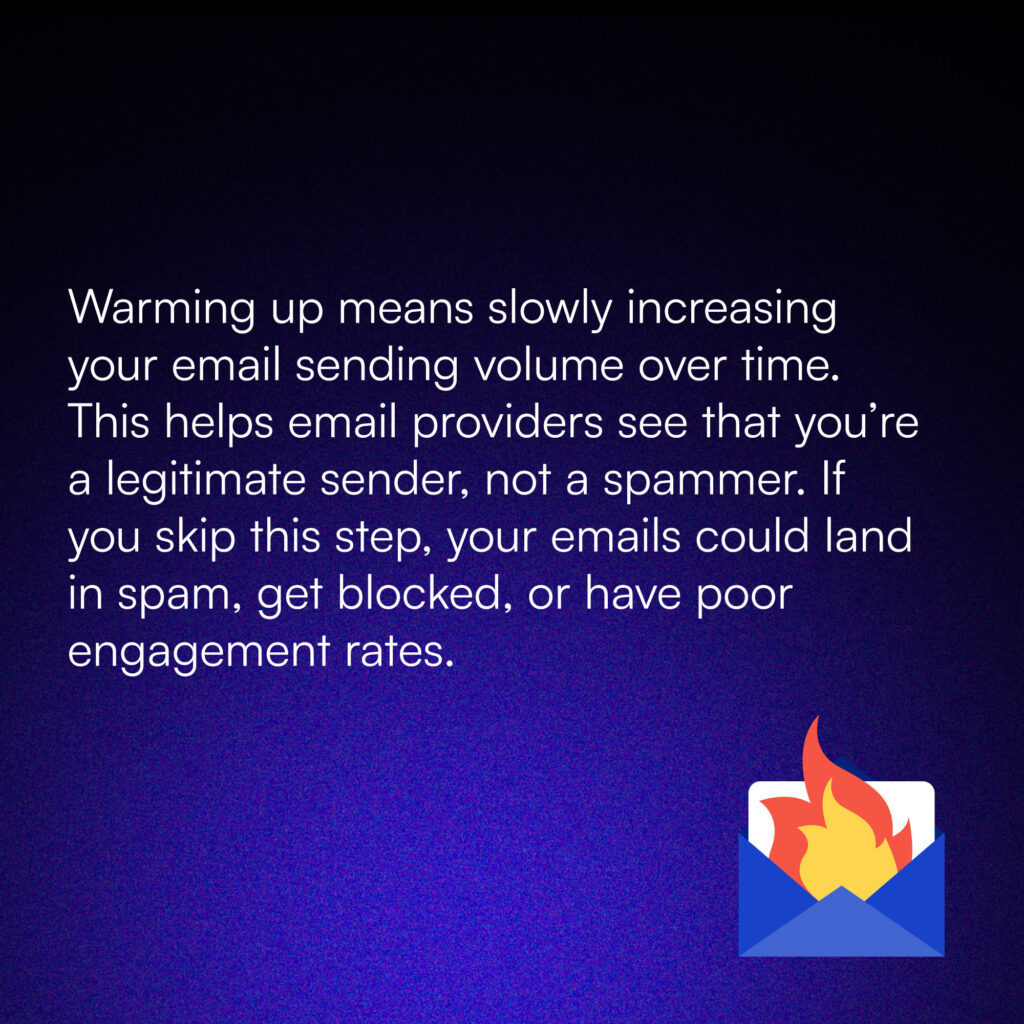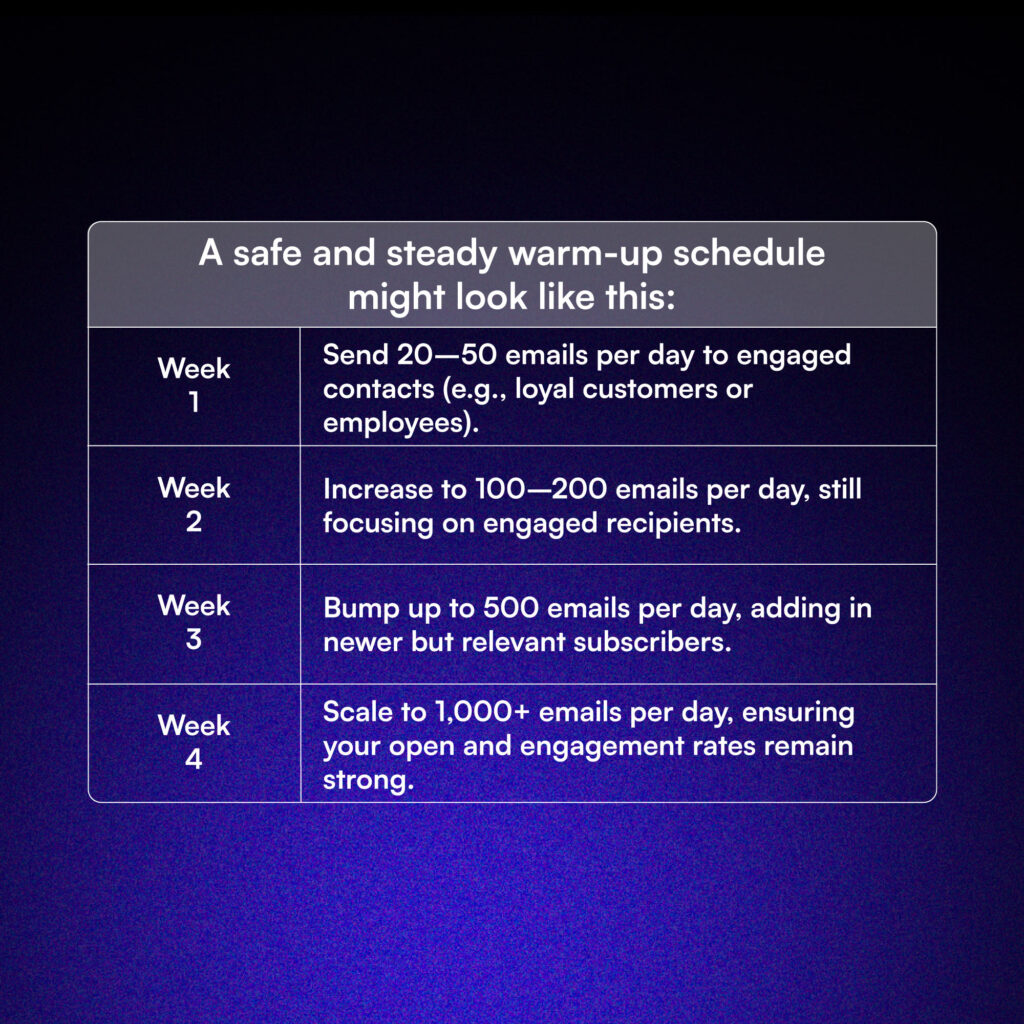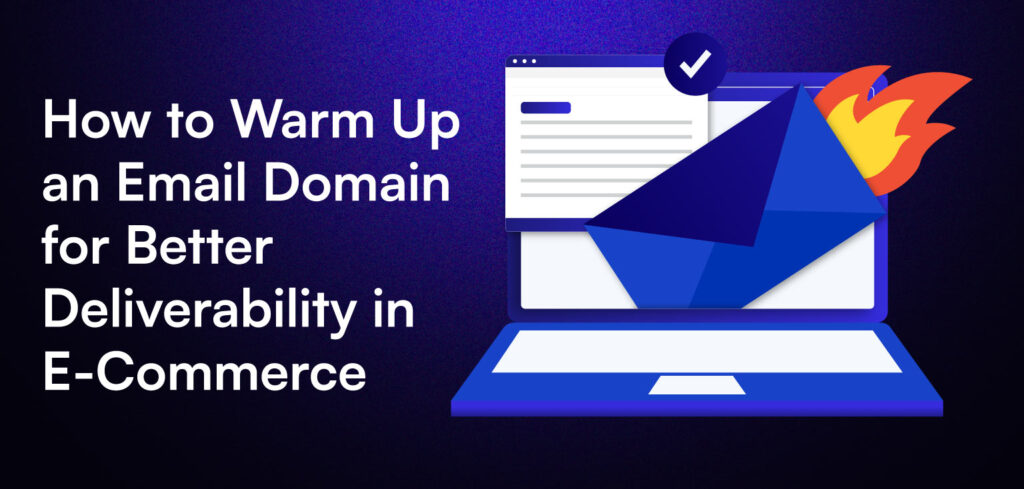Ever sent an email and wondered why it ended up in spam?
That’s because email service providers (ESPs) don’t trust new domains right away. They need proof that you’re a legitimate sender, not a spammer. That’s where warming up an email domain comes in.
Warming up an email domain is the process of gradually increasing email sending volume to build a solid sender reputation. If you skip this step, your emails could suffer from low deliverability, high bounce rates, or land straight in spam folders.
In this guide, we’ll break down how to warm up an email domain, the best email warm-up tools, and the common mistakes to avoid. All in a simple, practical way, specifically for e-commerce businesses.
What is Email Domain Warm Up?
Learning how to warm up an email domain is like building trust with email providers. You can’t just start blasting out thousands of emails from a brand-new domain and expect great results. Instead, you need to ease into it.

A proper warm up involves sending small batches of emails at first—maybe just a few dozen a day—then increasing the volume as your domain builds a solid reputation. Over time, this tells email providers that people want your emails, improving your chances of hitting the inbox instead of spam.
Bottom line: Warming up your domain is a must if you want strong deliverability and engagement. It’s a slow process, but it’s worth it.
Why Warming Up an Email Domain is Non-Negotiable for E-Commerce
Imagine getting a brand-new phone number and immediately texting thousands of people. Odds are, many would ignore you, block you, or report you as spam. That’s exactly how email service providers (ESPs) react when a new domain suddenly starts sending mass emails.
And, that’s one of the main reasons why knowing how to warm up an email domain is essential.
For e-commerce brands, email is everything—order confirmations, abandoned cart reminders, promotions, loyalty rewards.
But if you skip the warm-up process, your emails might:
- Go straight to spam, meaning customers never see them.
- Bounce back, making it harder to reach inboxes in the future.
- Hurt your sender reputation, affecting all your future campaigns.
- See low engagement, which directly impacts revenue.
Warming up your domain is just a way of proving to ESPs that you’re a real, trustworthy sender. You start small, gradually increasing email volume over time so your messages are recognized as legitimate.
It takes patience, but it makes a huge difference in getting your emails where they belong—the inbox.
Skipping this step? That’s like shouting into the void and hoping someone hears you.
How to Warm Up an Email Domain: Step-by-Step
Follow these to learn how to warm up an email domain to boost your email deliverability the right way.
1. Authenticate Your Email Domain
Before sending a single email, set up authentication protocols to prevent ESPs from marking your emails as suspicious:
- SPF (Sender Policy Framework) – Tells ESPs which mail servers can send emails on your behalf.
- DKIM (DomainKeys Identified Mail) – Adds a digital signature to emails, proving they haven’t been tampered with.
- DMARC (Domain-based Message Authentication, Reporting & Conformance) – Provides instructions on handling unauthenticated emails.
Platforms like Google Postmaster Tools and MXToolBox help verify your email authentication setup.
2. Start Small and Increase Sending Volume Gradually
One of the biggest mistakes businesses make when using a new email domain is blasting out hundreds or even thousands of emails right away.
Email service providers (ESPs) like Klaviyo, MailChimp, HubSpot, ActiveCampaign, and SendGrid see this as suspicious behavior and may flag your domain as spam. Instead, you need to warm up your domain by starting small and gradually increasing your sending volume.
A safe and steady warm-up schedule might look like this:

Example: If you’re an e-commerce brand, start by emailing your most active customers—those who recently made a purchase or frequently open your emails. As your reputation builds, gradually expand to broader segments, like inactive subscribers or new leads.
The key is to avoid sudden spikes in volume, which can set off ESP alarms and hurt your sender reputation. Keep it gradual, monitor engagement, and make adjustments if needed.
3. Send to Highly Engaged Contacts First
Your initial emails should go to recipients who are likely to open, click, and reply. This tells ESPs that your emails are valuable, strengthening your reputation.
For e-commerce brands, start with loyal customers, previous purchasers, and subscribers who engage with your brand. If you don’t have an engaged list, try using a list cleaning tool like NeverBounce to remove inactive or unverified addresses.
4. Keep an Eye on Key Email Metrics
5. Use the Best Email Warm-Up Tools
Manually warming up a domain takes time. Thankfully, there are email warm-up tools that automate the process:
- Lemwarm – Part of Lemlist, it gradually increases sending volume while simulating engagement.
- Warmup Inbox – This helps your emails land in the inbox by generating automated replies from real accounts.
- Snov.io – A full email outreach tool with built-in warm-up features to protect sender reputation.
And there you have it! The quick and proven ways on how to warm up an email domain for ecommerce. Now that you have a better understanding of what it is and how to do it, let’s take a look at the common mistakes you should avoid.
Common Mistakes to Avoid
Even with the right strategy, mistakes can damage your sender reputation.
Avoid these pitfalls:
❌ Sending too many emails too soon – ESPs will flag you as suspicious.
❌ Skipping authentication – SPF, DKIM, and DMARC are non-negotiable.
❌ Ignoring engagement metrics – Low open rates? High spam complaints? Adjust your strategy ASAP.
❌ Using purchased email lists – These lists often contain inactive or spam-trap addresses that wreck deliverability.
Final Thoughts
How to warm up an email domain doesn’t have to be hard. With the right steps, you can build a strong sender reputation and keep your emails out of the spam folder.
By gradually increasing your email volume, setting up authentication protocols, and using the best warm-up tools, you’ll improve deliverability and make sure your promotional emails, order updates, and loyalty campaigns land where they should—the inbox.
Want to optimize your e-commerce email strategy? Check out more tips and resources to boost your email performance today!


